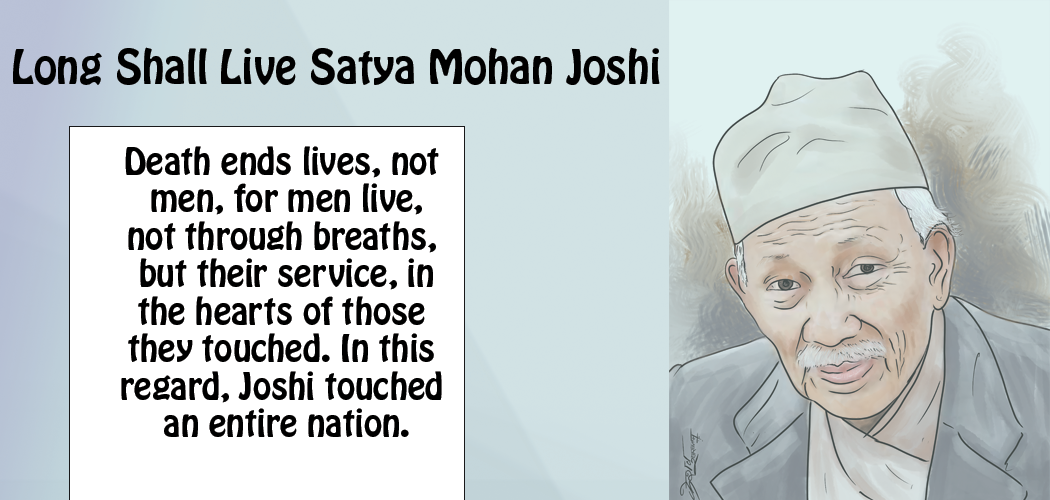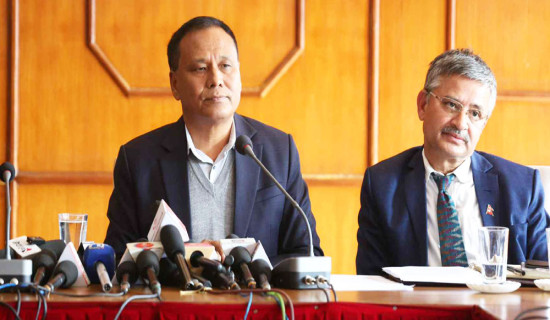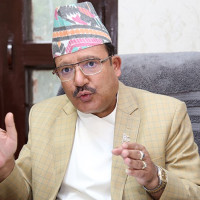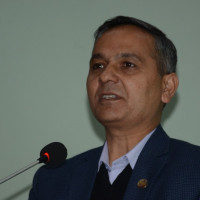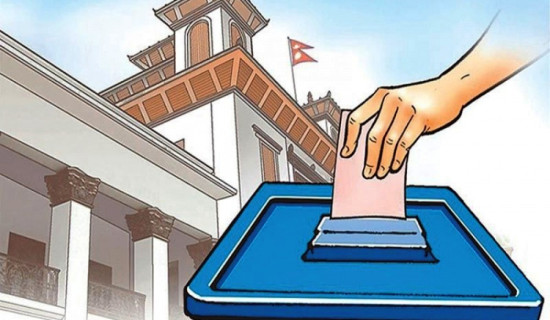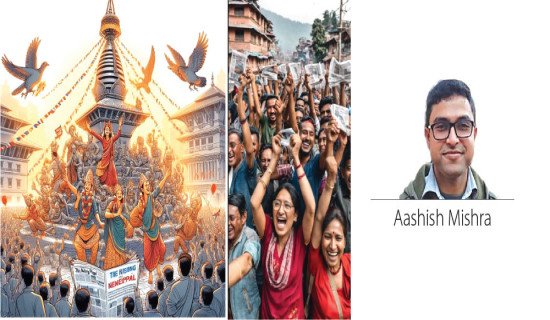- Thursday, 25 December 2025
Satya Mohan Joshi
Leaving Behind Lasting Legacy
Aashish Mishra
The only sure thing about life is that it ends. Death is the cruel inevitability that no one, rich or poor, loved or hated, big or small, can dodge. So perhaps we should have been more prepared for the passing of the great Satya Mohan Joshi at 7.09 am on October 16.
After enjoying remarkably good health for more than a century, the celebrated author and historian had started appearing weak and exhausted these past couple of years. The revered polymath, who could be seen walking gallantly around his locality of Bakhumbahal, Lalitpur up until his 101st birthday had confined himself to his home after the outbreak of the coronavirus in the country.
The health of this litterateur of the century, as the nation called him, began failing him and his hospital stays started growing longer and more frequent. The eyes that were as uninhibitedly exuberant as a 20-year-old, if not more, had begun sinking and his body seemed to struggle to keep up with the energy of his spirit. In hindsight, it appears we should have foreseen Sunday’s tragedy coming.
But then again, how could we? Most of us alive today would not have known Nepal without Satya Mohan Joshi. He was a stalwart of our times and an embodiment of an era. Rulers died, regimes fell and systems changed but Satya Mohan remained, always present, always accessible at his residence in the historic core of Patan.
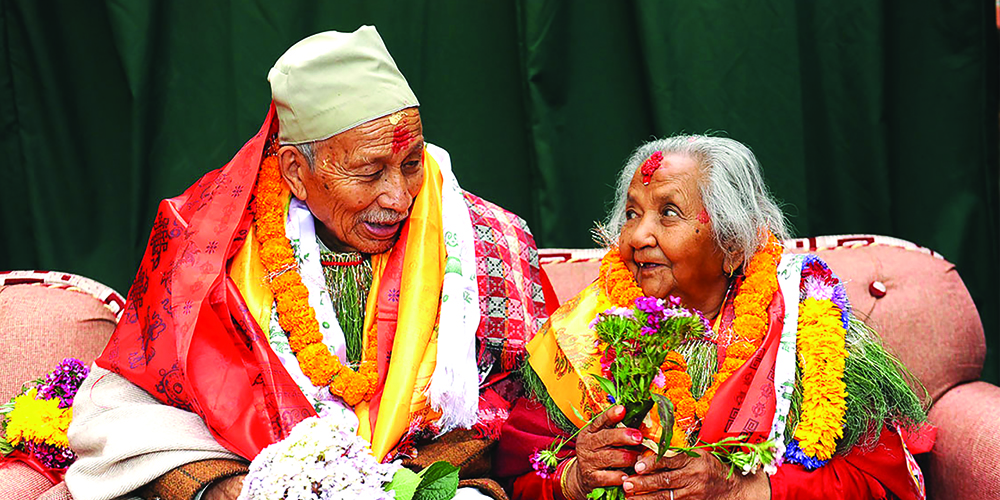
Defeating Death
Moreover, despite his recent illnesses, he was still far healthier than many others of his generation. And, giving us hope was the fact that he had survived worse. As included in his biography, penned by his close friend journalist Girish Giri and released in March this year, Joshi had defeated death once in 1944 when he was only 24.
He was in Tanahun to survey the socio-economic condition of the district for the Audyogik Vyaparik Samachar Sangraha Adda (Industrial Enterprises Information Collection Office) and had contracted malaria.
Being a very remote district at the time, Tanahun did not have any health facilities that Joshi could access for treatment nor were there any roads and vehicles for him to take to travel to a place that did. There was little reason to believe that he would survive but, call it luck or fate, help arrived in such an unexpected way that he survived.
It seemed that death knew the greatness of this man and the contributions he would make to his community, culture and society, that it realised the importance this life held and the institution this individual was destined to become.
Unfortunately, it did not show this kindness the second time around and plucked him from this world, bringing imaginable personal loss to her family and causing a national sorrow so deep that the state decided to fly its flag at half-mast for a whole day.
Celebrated for work, not birth or post
And let us bear in mind that Joshi was no politician, he was not part of any ruling family and he was not significantly wealthy. He was a citizen of an indigenous community who did not speak the language the state required him to as a native tongue and who never aspired for public life.
He was content in studying, learning and archiving the culture and heritage of his country and its people. But such were his contributions that the nation had to take notice of. Joshi received the attention and prominence he did in his life and death not because he held a particular last name or occupied a post that gave him authority over others but because he did all he could for
the development of the fields he thought were necessary without him needing to or anyone asking him to.
Nothing exemplifies this more than his book ‘Hamro Lok Sanskriti’ which won him his first Madan Puraskar in 1956. The book is a compilation of the folksongs Joshi heard in Tanahun and neighbouring Lamjung when there to survey on behalf of the Vyaparik Adda. He was there as a bureaucrat so all he needed to do was finish the survey and prepare the report to get paid.
But instead, he chose to stay and spend time with the locals, understand their culture, learn their songs and explore their origins. Even more, he saw how these musical traditions were in decline and felt he needed to document them and document them well before they vanished entirely.
He published them in the literary magazine Sharada along with details about their history and significance. He later collected these publications into the volume ‘Hamro Lok Sanskriti’.
At a time when there were no libraries, archives or journals and no one to check or verify, Joshi could have passed the songs he encountered as his creations and no one would have batted an eye. Laxmi Prasad Devkota allegedly did this with Muna Madan and achieved great praise and prestige from it.
But Joshi gave full credit to the people of the two districts he surveyed. Even after winning the Madan Puraskar, he maintained that he was merely the medium and that the villagers practising and preserving those songs deserved the honour.
Joshi neither craved grandeur nor preached it. He only ever did what he felt he had to, what his love for Nepal’s intangible heritage drove
him to. That these made him famous was a fortunate afterthought.
His second Madan Puraskar came in 1960 for his book ‘Nepal Rastriya Mudra’ where he explores the history of Nepali coins and his third came in 1971 for ‘Karnali Lok Sanskriti’ which he wrote based on his research of the Khas civilisation
.
Notice how none of his 'recognised' works is grand spectacles, plays, poems or stories. They are repositories of knowledge that Joshi prepared because he wanted to, not because anyone asked him to or because he hoped to get prizes through them. He wrote them for preservation.
Joshi was not alone in his exploits. Be it the trip to New Zealand a few days after Tenzing Norgay and Edmund Hillary conquered Mount Everest for the first time, the making of the first detailed map of Nepal or the conducting of the first scientific census in the country, Joshi made some of his greatest contributions when working as part of a team. But, while his teammates did their part as 'assignment’ or ‘employment’, Joshi did it out of passion and love. He genuinely wanted to make a difference in society. That is why his name lives on while others have been forgotten.
Incredible Humility
Joshi was extremely humble to the extent that he had once said in a programme where this reporter was present that he felt people had aggrandised him too much. Let that sink in for a moment for when was the last time you heard a celebrity say that they had been celebrated too much?
Joshi was so humble that when the government appointed him the first director of the Archaeological and Cultural Department (ACD) in 1959, he did not believe it (Yes, there was a small office related to Archaeology, Giri elucidates, but it did not oversee culture. The ACD was a new office established by the Nepali Congress government after democracy). Giri writes in Joshi’s biography that he initially thought it was a different Satya Mohan Joshi who had been given the position.
He did not believe that a non-gazetted second-class officer, who he was at the time, deserved a directorial position. This feeling persisted even after the then Home Minister Surya Prasad Upadhyaya confirmed it was him and that he had been appointed to work with 'Hamro Lok Sanskriti'. All he had done was collect songs that already existed, he maintained.
Fortunately for the country, he accepted the position and went on to establish Patan’s Archaeological Garden, Taulihawa’s Archaeological Museum, Bhaktapur’s National Art Museum and Kathmandu’s Rastriya Naach Ghar.
Long Shall Live Satya Mohan Joshi
Death ends lives, not men, for men live, not through breaths, but their service, in the hearts of those they touched. In this regard, Joshi touched an entire nation.
Had it not been for him, Nepal would never have known of one of its greatest sons, Araniko. It would never be where it is in terms of cultural preservation and promotion. There might not have even been any space for culture at all at the state level.
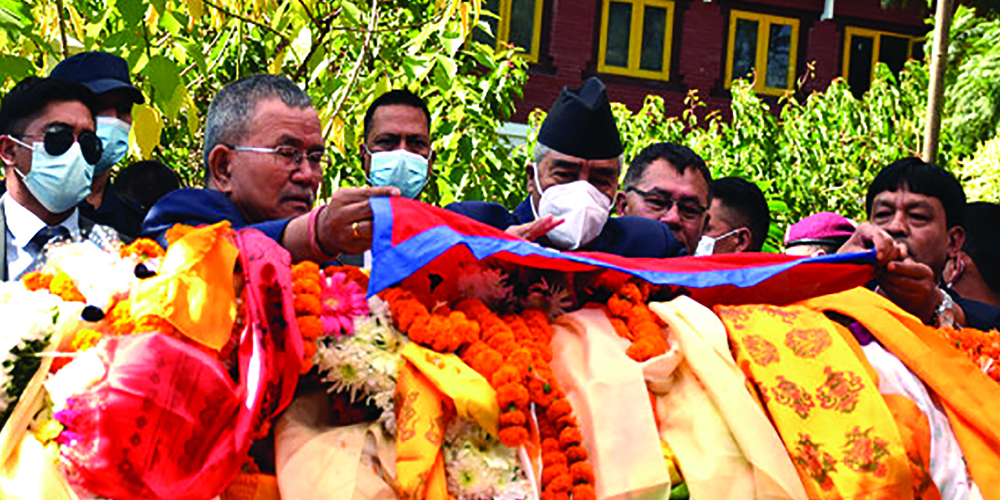
Joshi helped us understand the unique position we occupy in the world through our civilisation and our heritage. He taught us the meaning of living in Nepal and being Nepalis and he linked us to our collective past. And in doing so, transcended the boundaries of mortal life and became an immortal institution.
For every time someone credits Araniko for having introduced the Pagoda style of architecture to China, Satya Mohan Joshi will have lived. Every time someone views Patan’s Kartik Naach, which he helped revive, Satya Mohan Joshi will have lived.
Every time someone does anything at all related to culture – preservation, promotion or more – Satya Mohan Joshi will have lived.
Long shall live Satya Mohan Joshi because again, death ends lives, not men.
Unfulfilled Wishes
Satya Mohan Joshi was a man of simple taste and did not have extravagant wishes. As humble as he was, he believed he had already been given much.
But despite this, Joshi had a few things he wanted to do and see before he died.
The first among these was to live to be 101 which he did. The second was to have a book on his life penned by his close associate Girish Giri which the latter made sure to realise. But there were some wishes the centenarian did not get fulfilled.
Joshi really wanted a biography of his wife published. He held her in great regard and always maintained that because she devoted herself to the family, he could devote himself to culture and history. However, he could see this happen.
Similarly, he desired to see the Chakra Sambhar Paubha being painted in the second floor of his house completed before his death. But this did not happen.
Joshi had also hoped to see the Archaeological Garden that he started to build inside what is today the Patan Museum be maintained, upgraded and expanded and had expressed this desire in many public fora. But he did not get to see this either.
Joshi achieved a great deal in his lifetime. He authored over 60 books and was the first and so far, the only person to win the prestigious Madan Puraskar three times. No other author to date has ever won the prize more than once. He was also the first person other than a monarch to have his portrait featured on national coinage and postal stamps while still alive.
He had also been conferred the Rastra Gaurab national decoration this year. But if we are to pay our true respects, we must preserve the culture, the native languages and the heritage of this country that he so deeply loved.
(A journalist at this daily, Mishra writes on culture and society)
How did you feel after reading this news?

